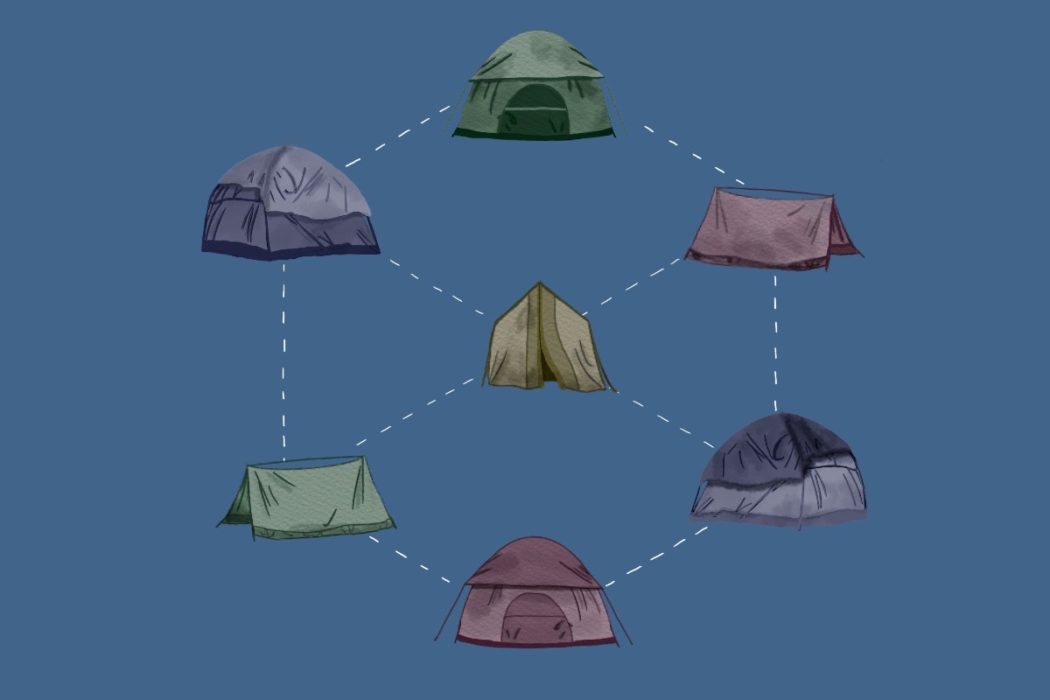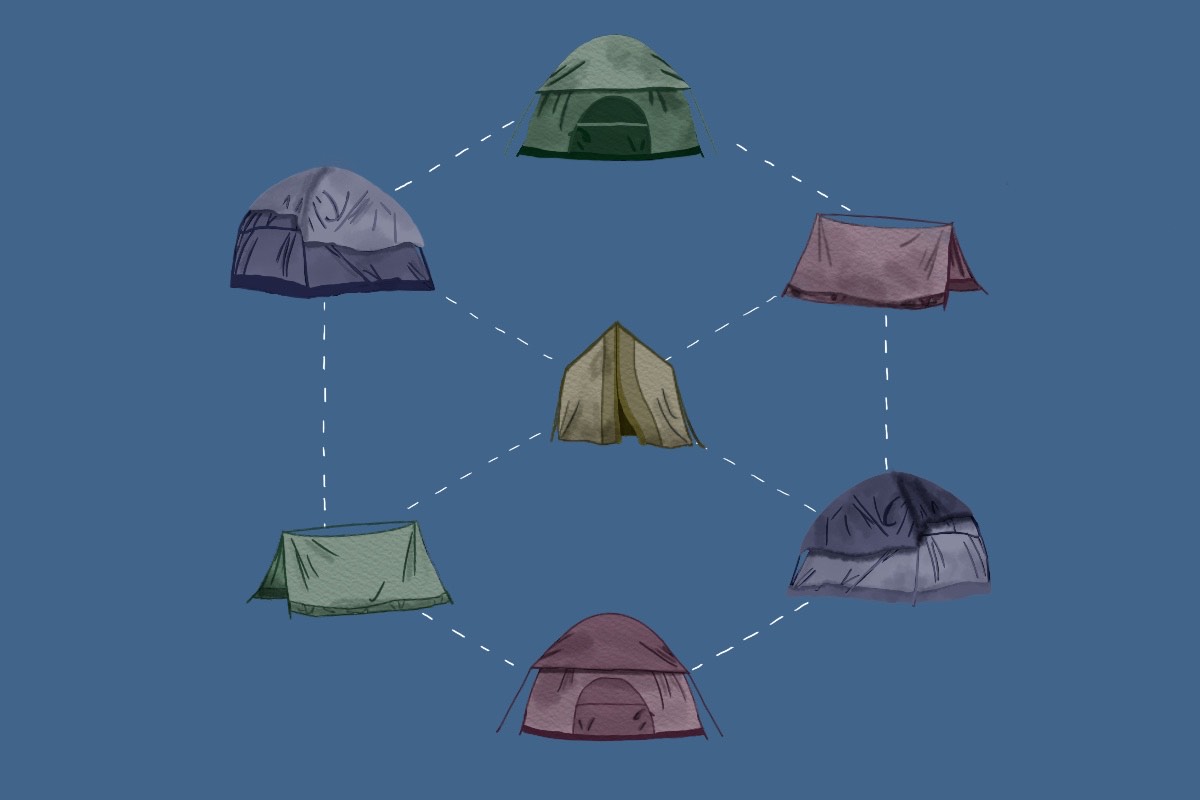
When the new coronavirus emerged in the U.S., it first popped up in areas — Seattle, the Bay Area, Los Angeles — that have among the country’s largest homeless populations. Chronic diseases are more prevalent among folks experiencing homelessness than the housed population, putting them at greater risk during the COVID-19 outbreak. The risk is particularly stark in California, where state models suggest the disease could infect 60,000 homeless people.
Physician assistant Brett Feldman runs the Street Medicine program at the University of Southern California and is vice chair of the Street Medicine Institute. His experience providing primary care to some of Los Angeles County’s 44,000-plus unsheltered people gives him a unique perspective on the unfolding pandemic. “We treat patients where they prefer to be treated,” Feldman said. “So if they prefer to be treated on the street, then it’s our duty to provide the highest level of care possible … just under a bridge, behind a dumpster, in the riverbed — wherever they are.”
Read the rest of our coverage of the novel coronavirus
I spoke with Feldman last week about Street Medicine’s model of care, the unique challenges facing sheltered and unsheltered homeless people during the outbreak, and why the push to put every person into a shelter could backfire if it isn’t done carefully. Our conversation has been edited for clarity.
Jake Bullinger: Why is COVID-19 particularly dangerous for homeless folks?
Brett Feldman: People experiencing homelessness are generally an aging population, and they age at a faster rate than the housed population [leading to a shorter life expectancy]. They have higher rates of medical illnesses that make them vulnerable — respiratory disease, heart disease, diabetes. They have personal factors that put them at higher risk, and then there are environmental factors. They have very poor access to basic hygiene, like places to wash their hands, or clean toilets.
But a lot of the research on folks experiencing homelessness being more susceptible to infectious diseases has to do with them living in crowded conditions like a shelter, but among the unsheltered population that we serve, that’s not necessarily true. For example, we know that if coronavirus reached skid row, where they live in crowded conditions, it would rip through it. There’s numerous shelters and soup kitchens, many of which hold hundreds of people. Any given person could visit multiple sites in a day and infect 1,000 or 2,000 people.
But we also know that skid row has less than 10 percent of the unsheltered population in L.A. When we go outside skid row, people live in already social-distanced camps. They might live in a camp with five or less people, rarely interact with anybody outside of camp, and there’s less risk for them to be exposed. In those cases, we might be, as outreach workers, the greatest risk to them for bringing something in from the outside. That’s something we need to be careful of.
So how does that change the way you administer treatment?
First, the outreach is focused on crisis mitigation and containment. Some of the more foundational, trust-building outreach can wait until we’re not in the middle of a pandemic. We’re limiting the number of team members that are going out.
For patients that are extremely high risk, usually the first priority is to get them off the street. That’s still the priority, but it does matter where they’re coming from and where they’re going. Ideally, if there’s a single room where they can be isolated, like in a hotel or motel, that would be the first option. If it’s in a shelter, it has to be one with a quarantine area. If the shelter doesn’t have a containment area, and they’re in a remote camp with little access to the outside world, it may be safer to stay where they are than to bring them to a shelter where they’re close to 500 people.
Both the Street Medicine Institute guide and the new Centers for Disease Control guide are clear that forcing people experiencing homelessness into crowded shelters isn’t necessarily the best plan if there isn’t an area for quarantine. This is a major shift in our thinking that anywhere inside is better than on the streets. Shelters need to have a safe area for quarantining and social distancing, otherwise this could result in worsening the spread of infection.
Bitterroot relies on the support of its readers.
Consider making a contribution today.
How many folks have you come across that are experiencing acute symptoms of coronavirus?
So far, we haven’t come in contact with any on the street.
How is the shelter system responding?
They’re doing things like spreading the beds apart, and sleeping head-to-foot. They’re staggering meal times so 500 people aren’t eating lunch together. Everybody is doing the best they can.
Do your patients have a pretty high level of fear and anxiety about the coronavirus?
Actually, they don’t. They don’t seem to be too concerned about it. They have so many threats in their day-to-day lives — to their health, to their safety. I suspect that, to them, this is just the next threat. And there will be another threat after this. I think their lack of anxiety related to this is a testament to their resilience to threats that a lot of us aren’t able to withstand.
What precautions are you and your staff taking to protect yourselves?
This has changed fairly recently. What we’re hearing is that we’ve reached a point where we should assume that everybody we come in contact with is a possible carrier — that’s part of the recommendations for social distancing. So when we ride in the cars together, we’re wearing masks with the team. We’re trying to limit the number of people in a car at the same time. When we get in the camp and are about to get within six feet of a patient, we wear a mask and gloves. When we take the gloves off, we use hand sanitizer. Ideally, it’d be soap and water, but we don’t have access to that.
When it comes to health care for the homeless, are there going to be lasting changes?
I think there will be a few. What we consider primary care usually involves a higher level of mental health proficiency, and now that’s going to include disaster preparedness and crisis mitigation. I think that’s going to become a standard issue in street medicine training.
Second, hopefully street medicine is included in discussions whenever we think about essential services for the unsheltered homeless. Just like every city should have a fire and police department, every city should have a street medicine program to serve the unsheltered.
What about the outbreak makes you particularly nervous?
I’m just as concerned as the general population about what a widespread outbreak would look like. What has me concerned about the particular population we serve is two big things: The first would be their general inability to access traditional health care. If there is a community that becomes infected, they’re less likely to access health care until they’re incredibly sick, and during that time there’s the potential to infect many, many others.
The other thing that worries me is for our policy makers to understand that, in these particular circumstances, it might not be best to force people off of the street into a location that is more crowded and would make them more susceptible to infection. [The state is rapidly expanding its shelter capacity by, in part, leasing hotels and buying trailers.] And any response made needs to be done in a trauma-informed way that respects their civil liberties.
What has surprised you so far?
The public in general has realized very quickly how vulnerable people experiencing homelessness are in this time. We’ve had a ton of people reach out offering hand sanitizer, and clinics offering masks and gloves even though they’re in short supply.

